Duffy the Haechi: A Korean Myth Story
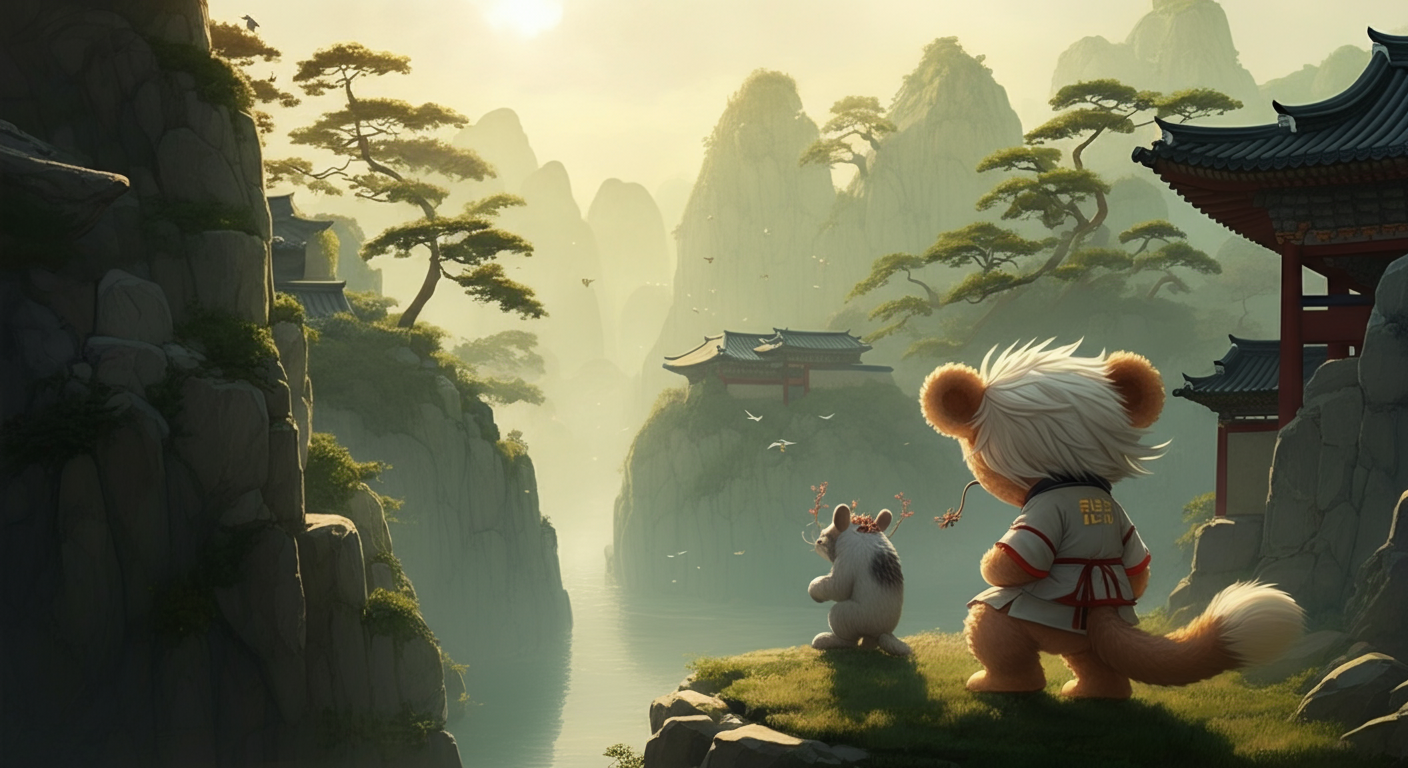
Are you ready to dive deep into the fascinating world of Korean mythology, especially when it features a character as cool as **Duffy the Haechi** (해치) from “K-Pop Demon Hunters”? Trust me, this isn’t just a fun character; it’s a window into the heart of Korean culture, a guardian of justice whose stories have been passed down through generations like precious heirlooms. Growing up in Korea, these mythical creatures weren’t just illustrations in old books; they were almost like invisible friends, always there, subtly influencing our understanding of right and wrong, much like how your favorite K-drama heroes inspire you today.
You know how K-dramas make you feel a deep connection (정, *jeong*) with their characters, or how K-pop teaches you about the power of standing up for what’s right? Well, the stories of the Haechi are just like that, but from ancient times. Imagine a creature that looks a bit like a lion but with scales and a horn, possessing a magical ability to tell truth from lies. This isn’t just any fantasy; this is the **Haechi** (해치), a legendary Korean guardian that serves as the magnificent inspiration for **Duffy the Haechi** in “K-Pop Demon Hunters.” It’s a true symbol of justice and protection, embodying the very spirit of fairness that Koreans have cherished for centuries. So, grab your imaginary magic scroll, because we’re about to embark on an enchanting journey through ancient Korean folklore, where we’ll uncover the secrets behind this majestic beast and discover why its spirit still resonates so powerfully in modern Korean society, even inspiring animated demon hunters!
Duffy the Haechi: The Heart of Korean Mythology
Let’s begin our adventure by understanding who **Duffy the Haechi** truly is, or rather, who the Haechi (해치) is in Korean tradition. This isn’t your average monster; it’s a noble, mythical creature, often depicted as a lion-like beast with a single horn on its head, scales covering its body, and sometimes wings. Its primary role in Korean mythology is that of a guardian – a protector against fire, a bringer of good fortune, and, most importantly, an impartial judge of right and wrong. When you see **Duffy the Haechi** bravely fighting evil in “K-Pop Demon Hunters,” you’re witnessing the modern embodiment of this ancient spirit.
For me, growing up, seeing Haechi statues was as common as seeing *kimchi* (김치) on the dinner table. They were always there, silent sentinels, especially guarding important places. It always gave me a feeling of reassurance, like an invisible shield was watching over us. You might be surprised to learn that this creature’s symbolism is deeply intertwined with the very foundations of Korean law and order, reflecting a long-held cultural value of integrity and fairness.
Origins of the Haechi (해치): A Creature of Myth and Legend
The story of the Haechi (해치) actually has roots stretching back to ancient China, where it was known as *Xiezhi*. It traveled along the Silk Road of ideas and made its way to Korea, where it truly became its own distinct, beloved mythical figure. Imagine ancient storytellers gathered around a crackling fire, sharing tales of a creature so wise that it could instantly distinguish between good and evil. That’s the kind of reverence people had for the Haechi. Its presence brought a sense of stability and ethical guidance to society, reinforcing the importance of living a just life.
In Korea, the Haechi quickly became a symbol of righteousness and legal justice. It was believed to have the power to discern truth from falsehood, even when humans were utterly confused. This incredible ability made it the perfect symbol for officials who upheld the law. So, when you see **Duffy the Haechi** standing firm against shadowy forces, remember that this unwavering spirit of justice has been part of its character for thousands of years. It’s an unbroken chain from ancient myth to modern animation!
What Makes Duffy the Haechi So Special?
What truly sets the Haechi apart in Korean folklore, and what makes **Duffy the Haechi** such a compelling character, are its unique abilities. Beyond its role as a judge, the Haechi is also a powerful protector against natural disasters, particularly fire. In a country where wooden structures were once prevalent, this fire-fighting aspect made the Haechi an incredibly revered guardian. Its single horn wasn’t just for show; it was said to be used to gore the guilty and ensure justice was served swiftly.
Moreover, the Haechi is often associated with the balance of nature and good fortune. Its presence was thought to bring harmony and prosperity, warding off misfortune and evil spirits. It’s a multi-talented mythological hero! Think of the *Dokkaebi* (도깨비), those mischievous Korean goblins you might have seen in the K-drama “Goblin: The Lonely and Great God,” who also have unique powers and a complex relationship with humans. The Haechi, however, stands firmly on the side of unwavering justice. It’s a fascinating comparison of mythical beings. If you’re curious about other Korean mythological creatures, check out our post on Dokkaebi: Goblin: More Than Just a Demon.
Tales of Justice: Duffy the Haechi in Korean Folklore
Now, let’s delve into the enchanting stories that have shaped the image of the Haechi (해치) through the centuries, much like the compelling narratives that captivate K-drama fans today. These aren’t just dry historical facts; they are vibrant folktales, or *jeonnyeoreung* (전례동화), filled with drama, wisdom, and a touch of magic that perfectly illustrate the Haechi’s crucial role. Imagine listening to these tales on a rainy day, curled up with a cup of warm *yuja-cha* (유자차, citron tea). That’s the feeling these stories evoke.
The Haechi’s reputation as a symbol of justice was so strong that during the Joseon Dynasty, the highest judicial officials, known as *sadaebu* (사대부), would wear Haechi insignia on their robes. This wasn’t just a fashion statement; it was a powerful declaration, a public promise that they would uphold the law with the same impartiality and wisdom as the mythical creature itself. Just as K-pop idols convey powerful messages through their music, the Haechi conveyed a message of unwavering ethical standards through its very image.
The Wise Judge: Stories of Duffy the Haechi’s Judgment
Picture this: two villagers are arguing fiercely over a boundary line, each swearing their innocence. Human judges are stumped, unable to find the truth amidst the tangled web of accusations and denials. Then, the Haechi (해치) is brought forth. Legend says that upon seeing the two, the Haechi would immediately point its horn at the liar, sometimes even charging them with a light but unmistakable nudge. The guilty party would instantly confess, unable to withstand the Haechi’s righteous gaze and unerring judgment. No need for complicated legal proceedings or dramatic courtroom scenes like in a K-drama; the Haechi knew the truth instantly!
These stories weren’t just for entertainment; they were moral lessons for children and adults alike. They taught that justice, even if delayed, would eventually prevail, and that honesty was always the best policy. This unwavering commitment to justice is a core characteristic we see echoed in **Duffy the Haechi**’s steadfast fight against evil in “K-Pop Demon Hunters.” It’s a comforting thought, isn’t it, that even in the most challenging situations, a force for good will emerge to set things right? *Aigo*, if only real life were always so clear!
Protecting the Palace: Duffy the Haechi’s Role in Architecture
Perhaps the most famous manifestation of the Haechi’s guardian role can be found right in the heart of Seoul. If you’ve ever seen majestic photos of Gyeongbokgung Palace (경복궁), the grandest of Seoul’s Five Grand Palaces, you might have noticed the intricate stone statues guarding its entrance. Yes, those are Haechi! These aren’t just decorative elements; they are powerful protectors, placed there to ward off evil spirits and, crucially, to protect the wooden palace structures from fire. They stand proudly, just outside the main gate, Gwanghwamun, and in front of the throne hall, *Geunjeongjeon* (근정전).
Imagine standing there, feeling the history seep into you, as if you’ve stepped onto a K-drama set like “Moon Embracing the Sun” or “Kingdom.” These stoic guardians are a constant reminder of the Haechi’s (해치) enduring legacy. They symbolize the palace’s integrity and the king’s commitment to righteous rule. Their presence reflects the deep belief that the physical world and the spiritual world are intertwined, and that powerful symbols can truly safeguard our lives. It’s truly *dae-bak* (대박)!
Duffy the Haechi in Modern Korea: From Ancient Myth to K-Pop Inspiration
The story of the Haechi (해치) doesn’t end in ancient palaces or dusty folktales. Far from it! In fact, its journey into the 21st century is a testament to the enduring power of Korean culture. Today, the spirit of the Haechi, personified by **Duffy the Haechi**, is more vibrant than ever, having transcended traditional boundaries to become a beloved symbol in modern Korean society and even globally through popular culture. It’s fascinating how a creature of myth can still hold such significant meaning in a bustling, technologically advanced country like Korea.
As someone deeply familiar with Korean culture, I’ve observed how these traditions evolve. We see it everywhere, from the subtle nods to history in K-drama sets to the incorporation of traditional aesthetics in K-pop music videos. The Haechi is no exception. Its blend of wisdom, justice, and protection resonates just as strongly with contemporary Koreans as it did with their ancestors. It’s a bridge connecting our rich past with our dynamic present, reminding us of the values that define us.
From Palace Guardian to Pop Culture Icon: The Evolution of Duffy the Haechi
In modern Korea, the Haechi (해치) has found a new, prominent role: it’s the official mascot of Seoul! Yes, the bustling, vibrant capital of South Korea has chosen this ancient guardian as its representative. You can spot cute, modern interpretations of the Haechi all over the city, from souvenirs to public art installations along places like the Cheonggyecheon Stream (청계천). This move by the Seoul Metropolitan Government wasn’t just about picking a cute character; it was a deliberate choice to connect the city’s modern identity with its rich historical and ethical foundations.
This contemporary presence makes the leap to **Duffy the Haechi** in “K-Pop Demon Hunters” feel incredibly natural. It’s a creature that Koreans inherently understand as a protector, a symbol of fairness, and a fighter against wrongdoing. It’s also a wonderful example of how Korea proudly showcases its heritage in new and exciting ways, making it accessible to a global audience. Just like how *Hanbok* (한복), traditional Korean clothing, gets stunning modern makeovers in K-pop performances, the Haechi receives a fresh, animated life.
The Message of Duffy the Haechi in K-Pop Demon Hunters
The inclusion of **Duffy the Haechi** in “K-Pop Demon Hunters” is more than just a cool character design; it’s a brilliant way to introduce international audiences to a profound aspect of Korean culture. By featuring a Haechi as a demon hunter, the show taps into centuries of Korean folklore that celebrates justice, protection, and the triumph of good over evil. This aligns perfectly with the overarching themes often explored in K-dramas and K-pop, where protagonists frequently overcome adversity through determination, teamwork, and a strong sense of morality.
When you see Duffy using its powers to discern truth, combat darkness, or protect its friends, you’re witnessing the essence of the Haechi (해치) in action. It’s a testament to how traditional myths can provide timeless archetypes for modern storytelling. This character truly embodies the spirit of *hwaiting* (파이팅!), that powerful Korean cheer meaning “You can do it!” or “Fighting!” Its presence not only entertains but also subtly educates viewers about Korea’s deep cultural values and the enduring belief in righteousness. This fusion of ancient myth with contemporary animation is truly a fantastic way to experience a piece of Korea, much like enjoying a casual *chimaek* (치맥, chicken and beer) night while watching your favorite show!
How K-Pop and K-Dramas Bridge Cultures with Duffy the Haechi
The global phenomenon of K-pop and K-dramas has created an incredible platform for sharing Korean culture, and characters like **Duffy the Haechi** are perfect examples of this cultural bridge-building. Fans who might first be drawn to the catchy tunes or compelling storylines soon find themselves exploring the deeper cultural nuances. They learn about Korean food, etiquette, historical events, and, of course, mythology. The Haechi, as a symbol of justice and protection, resonates universally, but its unique Korean imagery adds a fascinating layer of cultural discovery.
This is where the magic happens – where entertainment becomes education. Shows featuring characters inspired by Korean myths help international viewers understand concepts like the importance of community, resilience, and ethical conduct, which are deeply embedded in Korean society. It’s not just about learning facts; it’s about feeling the *jeong* (정) – that deep sense of attachment and shared experience – with a culture that might initially feel foreign. When you connect with Duffy, you’re connecting with a piece of Korean soul.
Conclusion: The Enduring Legacy of Duffy the Haechi
From ancient palace grounds to the vibrant world of “K-Pop Demon Hunters,” the journey of **Duffy the Haechi** is a captivating tale of cultural endurance and adaptation. This magnificent mythical creature, known as the Haechi (해치) in Korea, stands as a powerful symbol of justice, protection, and discernment. Its ability to distinguish truth from falsehood, to ward off disaster, and to inspire righteousness has cemented its place not only in historical folklore but also in the heart of modern Korean identity.
The next time you see **Duffy the Haechi** on screen, remember the thousands of years of history and wisdom it represents. It’s more than just a character; it’s a living piece of Korean heritage, continuously inspiring new generations with its timeless message of fairness and good. As K-pop and K-dramas continue to charm audiences worldwide, characters like Duffy the Haechi serve as wonderful ambassadors, inviting everyone to explore the richness and depth of Korean culture. So, a big *gamsahabnida* (감사합니다, thank you) for joining me on this cultural exploration! Keep an eye out for the Haechi – it’s always watching over Seoul, and now, over the demon hunters too!
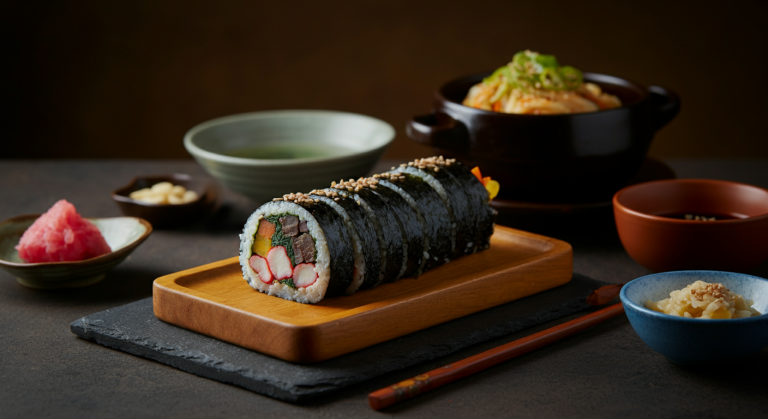

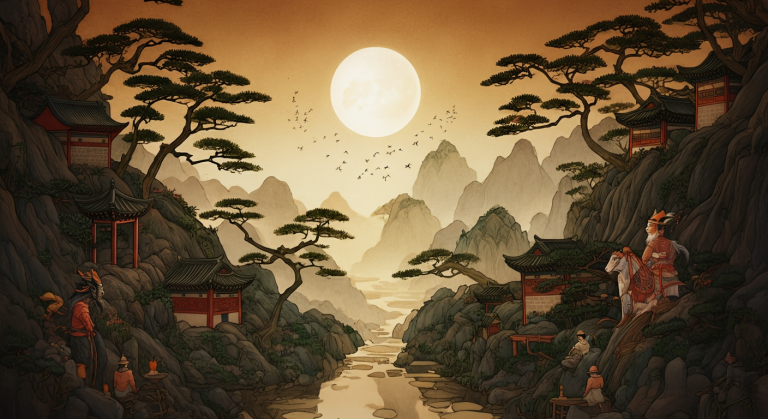
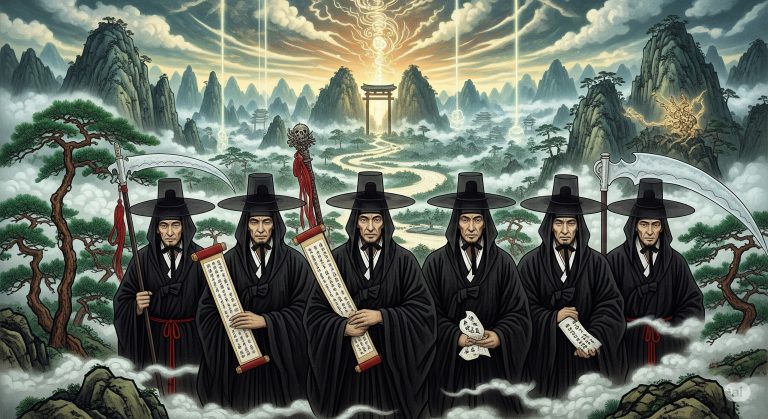
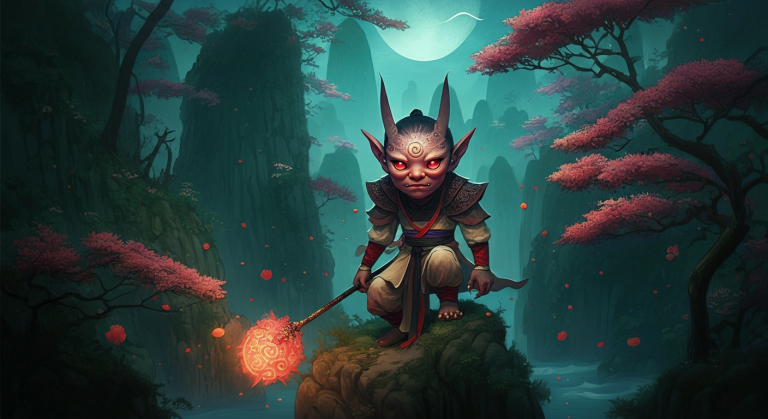
![Dear Mom, I Can’t Come to Dinner Because Baek Sa-eon Just [SPOILER] and I Need 3-5 Business Days to Recover](https://k-vibe.net/wp-content/uploads/2025/08/kvibe-thumbnail-20250829-215006-768x419.png)